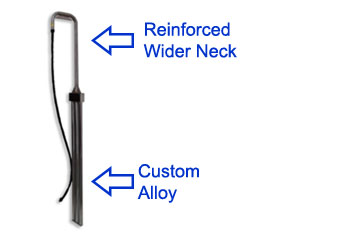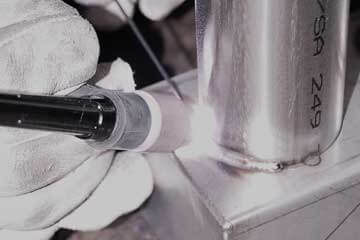🇺🇸USA Mfg heaters! ⭐️ All parts & materials are made in America– ready to ship 🚛
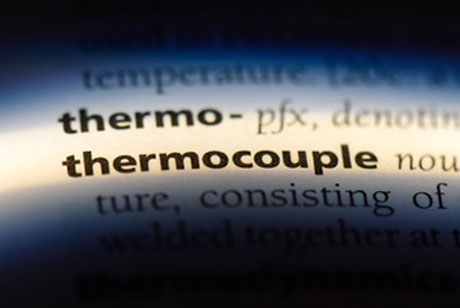
What Is a Thermocouple? the definition:
Author: Skip Schaefer
A thermocouple is a sensor that’s used to measure temperature, (it's like a thermometer). It comprises two wire legs that are made from different metals. The wire legs create a junction at one end. The temperature is measured at this junction. A voltage is produced whenever there is a change of temperature in the junction. To calculate the temperature, thermocouple reference tables are useful in the interpretation of voltage, but we can let the digital indicator do all the thinking for us.
Thermal coupler or thermal coupling?
And note: the correct spelling for thermal coupler is thermocouple
These thermometers come in a variety of styles, such as bare wire, infrared, transition joint thermocouple probes, thermocouple probes with connectors, or even just thermo coupler wire. In process finishing, we sell our customers Thermocouple Type J for their heaters.
Thermocouples are cheap, interchangeable, have common connectors & can measure a large range of temperatures.
In general, thermocouples are used in a variety of industrial applications. Because of the variety, it’s crucial to be fully aware of its ranges, functionality, and structure, to determine the most suitable material and type of thermo coupler for your specific application.
If your not sure what you need, call us at 208-323-6143 and talk to one of our heating experts.
How Does a Thermocouple Work? (What Does It Do?)
It measures temperature. When two wires consisting of different types of metals are welded together at both ends, and one of those ends is heated, there is a continuous flow of current in the thermoelectric circuit. In 1822, an Estonian physicist Thomas Seebeck discovered this effect. So when you heat or cool the junction of the alloy probes, you can generate a voltage corresponding to the temperature.
One challenge however is ACCURACY, thermocouples may be off +-1.5º F. If you need more precise measuring choose thermistors, silicon band gap sensors or resistance thermometers.
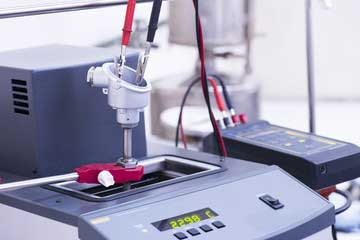
For those who own a gas heater or gas burner that requires to cycle on and off, then you have a thermocouple in your life. Typically, it’s a reliable device that works side by side with a standing pilot. Just like the Olympic torch, this little flame burns while the appliance is running.
The thermo-couplers main role is to ensure that the pilot remains lit. Once it sends a little electric current to a sensor, the gas valve then signals the valve to stay open.
Test It and Fix It:
- If the pilot light goes out when you release the gas control knob (after holding it in for the recommended 20-30 seconds), then you probably have a thermocouple issue.
- Make sure thermocouple probe is close to the flame.
- Clean and blow out any dust in the gas tube and orifice.
- Grab your multimeter and set to millivolts. Next unbolt the thermocouple from the gas valve, then light the pilot and hold in the control knob to keep it burning. When the probe has gotten hot,(about 60 seconds) place one lead on the shaft of the thermocouple and the other lead on the connector. If the milivolts are less than 25, then your thermocouple is bad. It will need to be replaced.
Thermocouple Applications
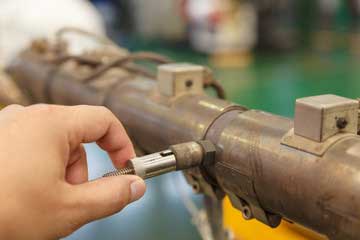
Applications include temperature measurement for kilns, gas turbine exhaust, diesel engines, water heaters, and process heating equipment. Thermocouples measure from −270 up to 3000 °C.
Choose your thermocouple to satisfy your specific application conditions carefully. Some of the factors to consider include:
- - Temperature (choose type J, K, M, T, or other)
- - Service Life (the larger the diameter, the longer the service life)
- - Response Time (the larger the diameter, the shorter the response time)
Steel Making
Type B, S, R and K thermocouples are used in the steel & iron industries to monitor temperatures and chemistry throughout the alloy making process. Type S thermocouples are used in the electric arc furnace to measure the temperature of molten steel.
Gas Appliance Burners
As mentioned above in the section "How Do You Know If You Have A Bad Thermocouple", many gas-fed heating appliances such as ovens and water heaters use a safety thermocouple. If the pilot flame goes out, unburned gas may be released, which is an explosion risk and a health hazard. To prevent this, most appliances use a thermocouple in a fail-safe circuit to detect when the pilot light is burning.
Plastics
There is a wide range of styles of thermocouples for various industries such as food, pharmaceutical, plastic, etc. The plastic industry, for instance, like cost-effective thermocouples without Magnesium Oxide, bayonet cap style, and spring adjustable for quick installation.
Certain industries do prefer thermocouple assemblies that contain thermo-elements styled in hard-pack Magnesium Oxide with an annealed metal sheath. They can be formed and bent into a radius that is twice the outer sheath size.
Types of Thermocouple Sensors
Thermocouples are available in a wide range of calibrations or metals. Every single type has its unique features in terms of application compatibility, chemical resistance, vibration resistance, durability, and temperature change. “Base Metal” thermocouples (type J, K, T, and E) are the most popular types. On the other hand, “Noble Metal” thermocouples (type R, S, and B) are often used in high-temperature applications.
Before looking at the different types of thermocouples, it’s important to remember that a thermocouple is usually contained in a protective sheath to separate it from the local atmosphere. In general, this protective sheath significantly lowers the effects of corrosion. Our customers usually protect the wiring in a Thermowell.

Thermocouple Types and Sensors
Type K Thermocouple (Nickel-Alumel/ Nickel-Chromium)
It’s the most popular type of thermocouple. It’s reliable, accurate, cheap, and has a wide temperature range.
Type J Thermocouple (Constantan/ Iron)
It’s also very common but has a relatively smaller temperature range, as well as a shorter timespan at higher temperatures compared to the Type K. In terms of reliability and expense, and it is similar to the Type K.
Type T Thermocouple (Constantan/ Copper)
It’s a very stable thermocouple type and is usually used in very low-temperature applications, including ultra-low freezers or cryogenics.
Type E Thermocouple (Constantan/ Nickel-Chromium)
It has higher accuracy and a stronger signal compared to the Type K or even Type J at relatively moderate temperature of around 1000°F and lower.
Type N Thermocouple (Nisil/ Nicrosil)
It has the same temperature limits and accuracy as the Type K. However; type N is a bit more expensive.
Type S Thermocouple (Platinum/ Platinum Rhodium – 10%)
It’s used in extremely high-temperature applications, such as the Pharmaceutical and Biotech industries. Due to its stability and accuracy, it’s sometimes applicable in lower temperature applications.
Type R Thermocouple (Platinum/ Platinum Rhodium – 13%)
They’re used in extremely high-temperature applications. Since it has fairly higher percentage of Rhodium compared to Type S, it is somewhat more expensive.
Type B Thermocouple
It’s often used in very high-temperature applications and has the highest temperature limit of all of them. It also maintains a high level of stability and accuracy at very high temperatures.
Still Confused?
Dont worry about it, call me, Skip Schaefer. I have been in the metal finishing equipment industry for over 50 years.
I will be happy to help if you have further questions or assistance setting up your process heaters and tanks.

